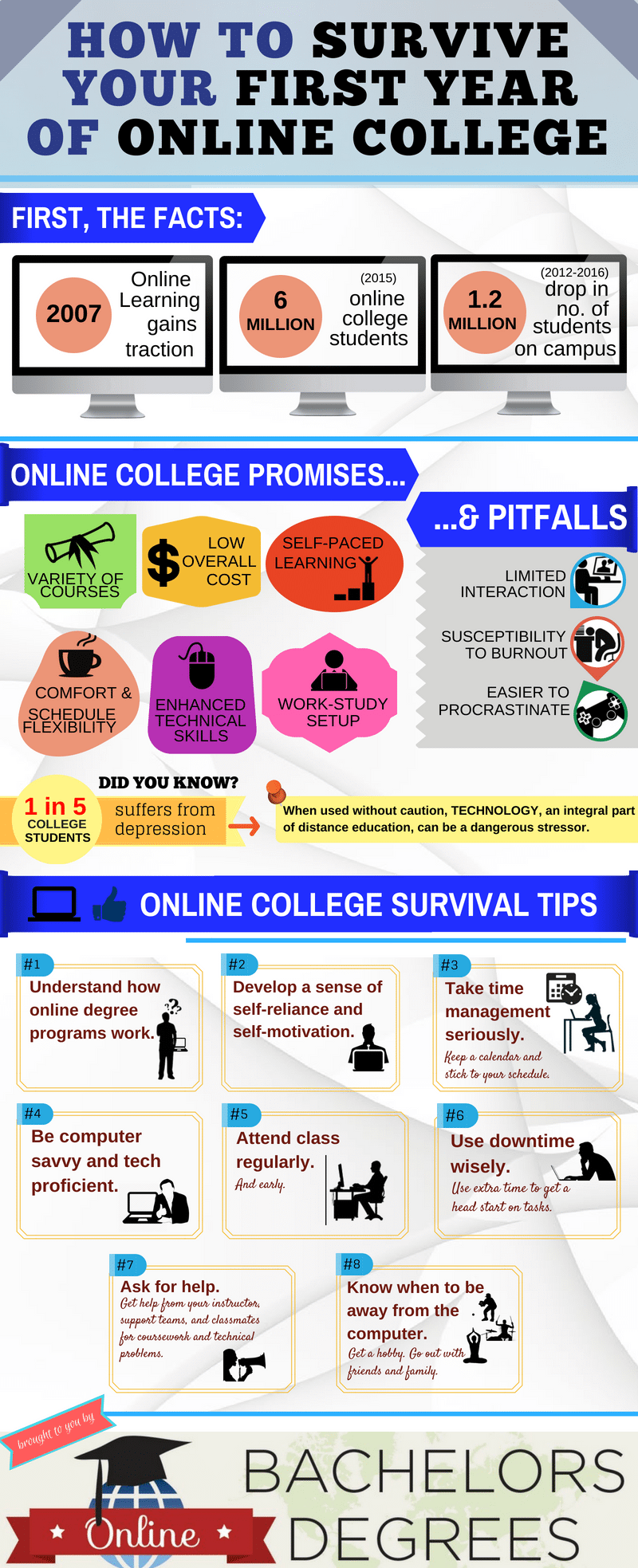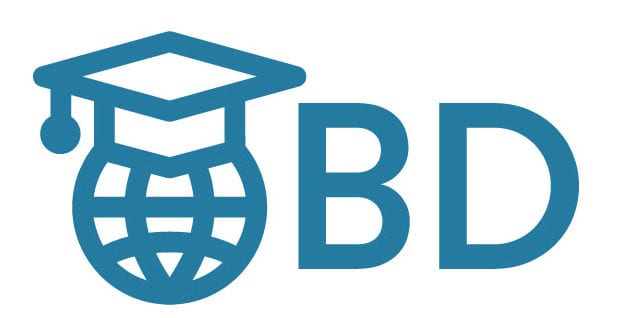
FIRST, THE FACTS:
1) Online learning or distance learning began to gain traction in 2007.
2) Distance enrollments is growing relentlessly. Over 6 million higher education students took at least one distance education course in 2015, comprising 30% of all enrollments (2017 report)
3) Between 2012 and 2016, the number of on-campus students dropped by 1.2 million or 6.4%
ONLINE COLLEGE PROMISES…
- Variety of courses
- Lower total costs
- Convenience and flexibility
- Self-paced learning
- Work-study setup
- Enhanced technical skills
… AND PITFALLS:
- Lack of interaction
- Prone to burnout
- Easier to procrastinate
DID YOU KNOW?
Nearly 1 in 5 college students suffer from anxiety or depression? When used without caution, technology–an integral part of the distance education system–can be a dangerous stressor.
TIPS TO SURVIVE:
- Understand exactly how online degree programs work.
- Develop a sense of self-motivation and self-reliance.
- Be computer savvy and tech proficient.
- Attend classes early and regularly.
- Ask for help for coursework and technical problems. Get in touch with support teams, chat rooms to connect with instructor and classmates.
- Take time management seriously. Keep a calendar and maintain a schedule.
- Use downtime wisely. Use extra to get a head start on tasks.
- Know when to be away from the computer. Keep a hobby.
